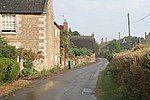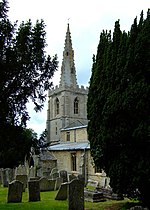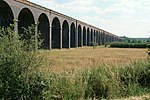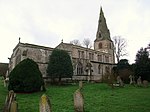Morcott
Civil parishes in RutlandVillages in Rutland

Morcott is a village and civil parish in the county of Rutland in the East Midlands of England. The population at the 2001 census was 329 falling slightly to 321 at the 2011 census. It is located about 7 miles (11 km) south-east of the county town of Oakham on the A47 and A6121 roads. A prominent reconstructed windmill can be seen from both East and West-bound approaches to Morcott along the A47.Rutland County Council designated Morcott a Conservation Area in 1981, one of 34 conservation areas in Rutland which are "of special architectural or historic interest, the character or appearance of which it is desirable to preserve or enhance".
Excerpt from the Wikipedia article Morcott (License: CC BY-SA 3.0, Authors, Images).Morcott
High Street,
Geographical coordinates (GPS) Address Nearby Places Show on map
Geographical coordinates (GPS)
| Latitude | Longitude |
|---|---|
| N 52.597 ° | E -0.638 ° |
Address
High Street
High Street
LE15 9DN
England, United Kingdom
Open on Google Maps









